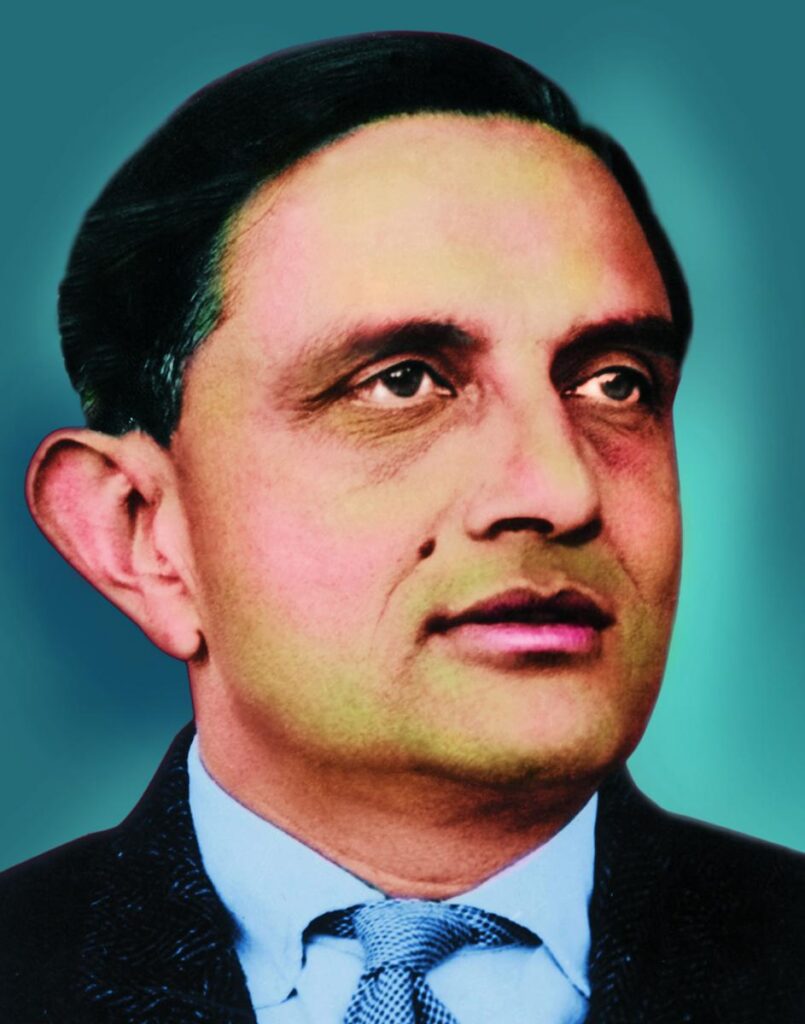Vikram Ambalal Sarabhai was born in Ahmedabad, India on August 12, 1919, the son of wealthy parents. His early education was in the family school directed by his mother. He graduated from Gujarat College in Ahmedabad and in 1940, and from St. John’s College, Cambridge, England. He then returned to India to become a research scholar under Sir C. V. Raman in Bangalore. He began to research cosmic rays, taking field measurements across India. He returned to Cambridge in 1945 and received his doctorate there in 1947 for researching photo-fission.
India’s Physical Research Laboratory (PRL) was established shortly after the country’s independence, in November 1947. PRL received support by the Council of Scientific and Industrial Research (CSIR) and the Department of Atomic Energy. One of the first major fields of inquiry by PRL was Sarabhai’s research on temporal variability of cosmic rays.
Vikram Sarabhai set up permanent recording stations at three locations in India by 1955, collecting and analyzing his own and other researchers’ observations. By 1956, he concluded that meteorological effects were not the only factors affecting daily variations of cosmic rays; rather they seemed to be more dependent on changes in solar activity.
Sarabhai led the Indian government’s participation in the International Geophysical Year (IGY) of 1957-1958. Combined with the 1957 launch of Sputnik, man’s first satellite, it spurred his interest in outer space, and in 1962, the Indian National Committee for Space Research was created, with Vikram Sarabhai as its first Chairman.
Dr. Sarabhai then set up the first Rocket Launching Station (TERLS) in India at Thumba, near Thiruvananthapuram on the Arabian Coast, as it is very close to the Equator, aid in the launching of Earth-orbit satellites. Sarabhai supervised the launching of India’s first rocket, a U.S.-made Nike-Apache, from Thumba on November 21, 1963.
After this successful flight, Sarabhai oversaw the expansion of the Thumba launch facility while also developing PRL into the nerve center for India’s space program. He established the Space Science and Technology Center at Thumba and the Experimental Satellite Communication Earth Station at Ahmedabad. His efforts brought international recognition to him and to India’s space program. Sarabhai’s achievements were recognized when he was appointed Chairman of the Atomic Energy Commission of India in May 1966.
Dr. Sarabhai believed science and technology could help create a modern India. For him, science was a vehicle to carry India forward and to be prepared to apply the advancements in technology to the real problems of man and society. He worked to acquire competence in advance technology for the solution of India’s particular problems based on the technical and economic evaluation of its resources.
Sarabhai began the Satellite Instructional Television Experiment in association with NASA. Unfortunately, he did not live to see its successful initiation in 1976. He also worked with the Russian space agency to begin the manufacture and launching of an Indian-produced satellite. He died before the Aryabhata I was put in orbit by the Russians in 1975, but he knew before his death that both projects were on their way to fruition.
Vikram Sarabhai received many awards for his efforts and was President of the Physics section of the Indian Science Congress (1962), President of the General Conference of the I.A.E.A., Verina (1970), and Vice-President of the Fourth U.N. Conference on “Peaceful Uses of Atomic Energy” (1971).
Dr. Sarabhai died during a visit to Thumba on December 31, 1971. He was honored as an innovator, an industrialist and a visionary. Asteroid 2987 Sarabhai is named in his honor, as is the Vikram Sarabhai Space Centre, (VSSC), a research institute specializing in solid and liquid propellants for rockets in Trivandrum, India.

